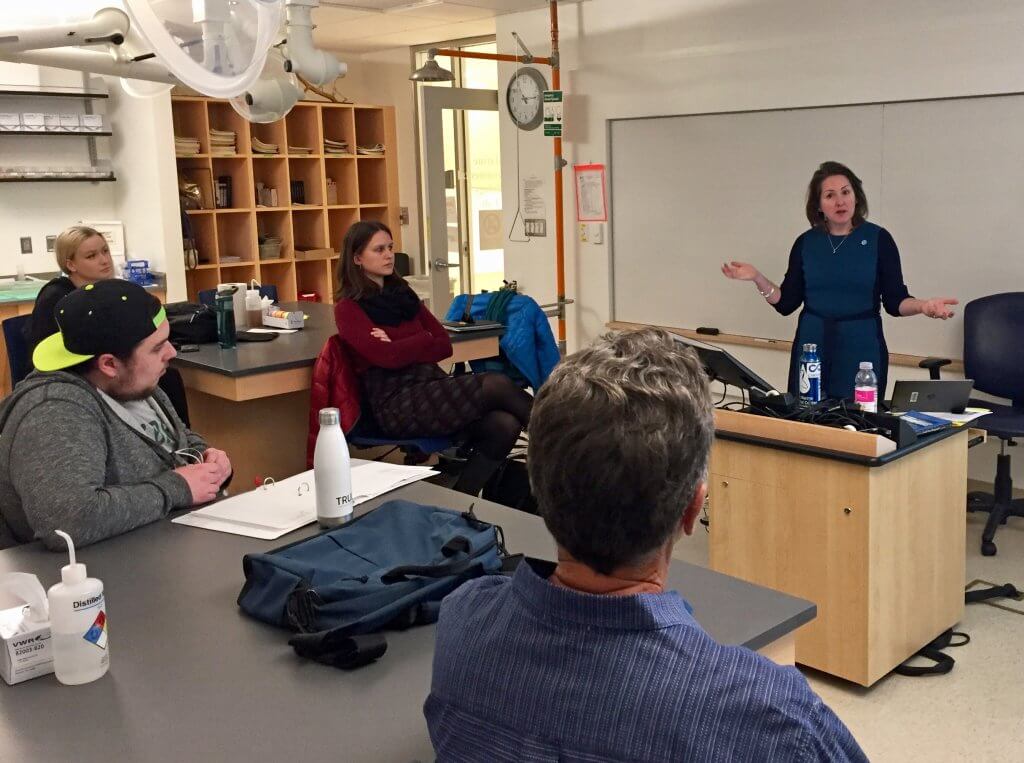
The Urban Coast Institute welcomed Nicole LeBoeuf, acting assistant administrator for the National Oceanic and Atmospheric Administration (NOAA) National Ocean Service, to Monmouth University on Jan. 30 to talk with students about the NOS’ work and careers in the agency.
The mission of the NOS is to provide science-based solutions through collaborative partnerships to address evolving economic, environmental and social pressures on our oceans and coasts. It observes, measures, assesses, and manages the nation’s coastal, ocean, and Great Lakes areas; provides critical navigation products and services; and conducts response and restoration activities to protect vital coastal resources.
Guest lecturing to School of Science Assistant Dean John Tiedemann’s coastal zone management (CZM) class, LeBoeuf described her work guiding the strategic vision of the 1,800-member agency.
“We’re small, but we’re scrappy, and we’re doing lots of amazing things,” she said.
LeBouef praised the Coastal Zone Management Act of 1972 for bringing much-needed consistency to how the states deal with their shorelines and waters. The goal of the act, which is administered by NOAA, is to preserve, protect, develop, and where possible, restore or enhance the resources of the nation’s coastal zone. Currently, 34 states have Coastal Zone Management Programs in place – every state along the shore or Great Lakes but Alaska.
The vast diversity of America’s coastlines presents one of the greatest challenges for NOS’ work, she said. Flipping between PowerPoint photos of a rural bluff overlooking the sea and a densely developed waterfront city, LeBouef noted, “This is every bit as much a coastal zone arena.”
LeBouef outlined the critical economic importance of coastal zones in the U.S. About 40 percent of Americans live in coastal counties, and beach tourism and recreation adds over $100 billion to the nation’s GDP annually, she said. U.S. commercial ports alone are responsible for 13 million jobs.
“I would challenge you to find anything in this room that didn’t come through a port,” she said. “So it is very important that our ports are taken care of.”
With a broad network of monitoring stations, ocean buoys, satellite communications, autonomous gliders and other scientific equipment at its disposal, the NOS provides data, tools, and services that help protect the ports and coastal economies and prepare them for future challenges, she said. To learn more about the NOS, visit https://oceanservice.noaa.gov.
